
Sir Thomas Lawrence was a leading English portrait painter and the fourth president of the Royal Academy. Lawrence was a child prodigy. He was born in Bristol and began drawing in Devizes, where his father was an innkeeper at the Bear Hotel in the Market Square. At the age of ten, having moved to Bath, he was supporting his family with his pastel portraits. At eighteen he went to London and soon established his reputation as a portrait painter in oils, receiving his first royal commission, a portrait of Queen Charlotte, in 1790. He stayed at the top of his profession until his death, aged 60, in 1830.
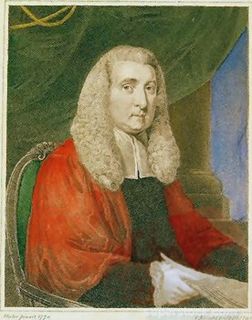
Daines Barrington, FRS, FSA was an English lawyer, antiquary and naturalist. He was one of the correspondents to whom Gilbert White wrote extensively on natural history topics. Barrington served as a Vice President of the Royal Society and wrote on a range of topics related to the natural sciences including early ideas and scientific experimentation on the learning of songs by young birds. He designed a standard format for the collection of information about weather, the flowering of plants, the singing of birds and other annual changes that was also used by Gilbert White. He also wrote on child geniuses including Mozart, who at the age of nine had visited England.
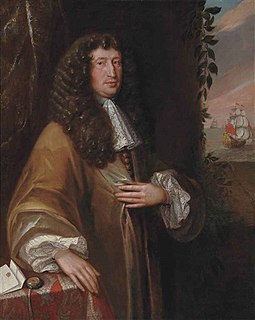
John Barrington, 1st Viscount Barrington, known as John Shute until 1710, was an English dissenting theologian and Whig politician who sat in the House of Commons from 1715 to 1723.

William Wildman Shute Barrington, 2nd Viscount Barrington, PC, was a British politician who sat in the House of Commons for 38 years from 1740 to 1778. He was best known for his two periods as Secretary at War during Britain's involvement in the Seven Years War and American War of Independence.

Viscount Barrington, of Ardglass in the County of Down, was a title in the Peerage of Ireland. It was created in 1720 for the lawyer, theologian and politician John Barrington. He was made Baron Barrington, of Newcastle in the County of Limerick, also in the Peerage of Ireland, at the same time. Born John Shute, he had assumed by Act of Parliament the surname of Barrington in lieu of his patrilineal surname in 1716, having previously succeeded to the estates of Frances Barrington, married to his cousin.
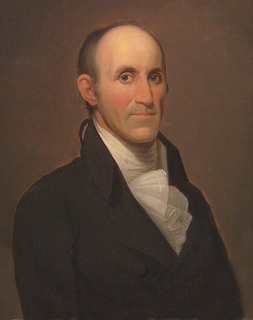
Charles Lee was an American lawyer and politician from Virginia who served as United States Attorney General from 1795 until 1801, after serving the prosecutor for the City of Alexandria as well as three terms as a delegate from Fairfax County and United States Secretary of State ad interim from May 13, 1800, to June 5, 1800.

Samuel Hood, 1st Viscount Hood was an admiral in the Royal Navy. As a junior officer he saw action during the War of the Austrian Succession. While in temporary command of Antelope, he drove a French ship ashore in Audierne Bay, and captured two privateers in 1757 during the Seven Years' War. He held senior command as Commander-in-Chief, North American Station and then as Commander-in-Chief, Leeward Islands Station, leading the British fleet to victory at Battle of the Mona Passage in April 1782 during the American Revolutionary War. He went on to be Commander-in-Chief, Portsmouth, then First Naval Lord and, after briefly returning to the Portsmouth command, became Commander-in-Chief, Mediterranean Fleet during the French Revolutionary Wars. His younger brother was Admiral Alexander Hood, 1st Viscount Bridport (1726–1814), and his first cousin once-removed was Admiral Sir Samuel Hood, 1st Baronet (1762–1814).

Gilbert Charles Stuart was an American painter from Rhode Island Colony who is widely considered one of America's foremost portraitists. His best-known work is an unfinished portrait of George Washington, begun in 1796, which is sometimes referred to as the Athenaeum Portrait. Stuart retained the portrait and used it to paint scores of copies that were commissioned by patrons in America and abroad. The image of George Washington featured in the painting has appeared on the United States one-dollar bill for more than a century and on various postage stamps of the 19th century and early 20th century.
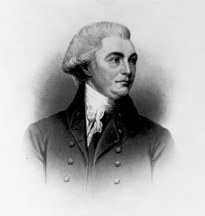
William Bingham was an American statesman from Philadelphia. He was a delegate for Pennsylvania to the Continental Congress from 1786 to 1788 and served in the United States Senate from 1795 to 1801. Bingham was one of the wealthiest men in the United States during his lifetime, and was considered to be the richest person in the U.S. in 1780.
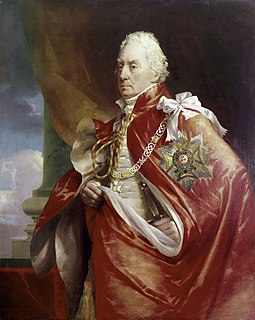
Admiral George Keith Elphinstone, 1st Viscount Keith was a British naval officer active throughout the Napoleonic Wars.

Sir William Beechey was a leading English portraitist during the golden age of British painting.

General Charles Stanhope, 3rd Earl of Harrington, styled Viscount Petersham until 1779, was a British Army officer and politician who sat in the House of Commons between 1774 and 1779 when he succeeded to the peerage as Earl of Harrington.

Admiral Alexander Hood, 1st Viscount Bridport, KB, of Cricket St Thomas, Somerset, was an officer of the British Royal Navy during the French Revolutionary Wars and Napoleonic Wars.
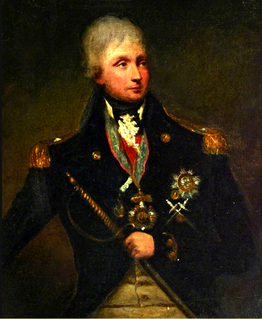
Vice-Admiral Sir Samuel Hood, 1st Baronet, of 37 Lower Wimpole Street, London, was an officer of the Royal Navy. He served as a Member of Parliament for Westminster in 1806.

John Stewart, 7th Earl of Galloway was a Scottish peer, styled Viscount Garlies from 1747 until 1773, who became the 7th Earl of Galloway in 1773 and who served as a Member of Parliament from 1761 to 1773.
Katherine FitzGerald, suo jure Viscountess Grandison (1660–1725), was a wealthy Irish heiress, being the only child of Sir John FitzGerald of Dromana, County Waterford. She inherited the Dromana estate in 1664 upon the death of her father. She was married three times; firstly to John Le Poer, 2nd Earl of Tyrone; secondly to Brigadier-General, Hon. Edward FitzGerald-Villiers; and thirdly and lastly to General William Steuart.

Priscilla Anne Fane, Countess of Westmorland, styled Lady Burghersh between 1811 and 1841, was a British linguist and artist.
Colonel Rich Ingram, 5th Viscount of Irvine, was an English peer and politician.

Major-General John Barrington was an officer of the British Army, the third son of John Barrington, 1st Viscount Barrington.
George Barrington, 5th Viscount Barrington, was a British minister and aristocrat.
















